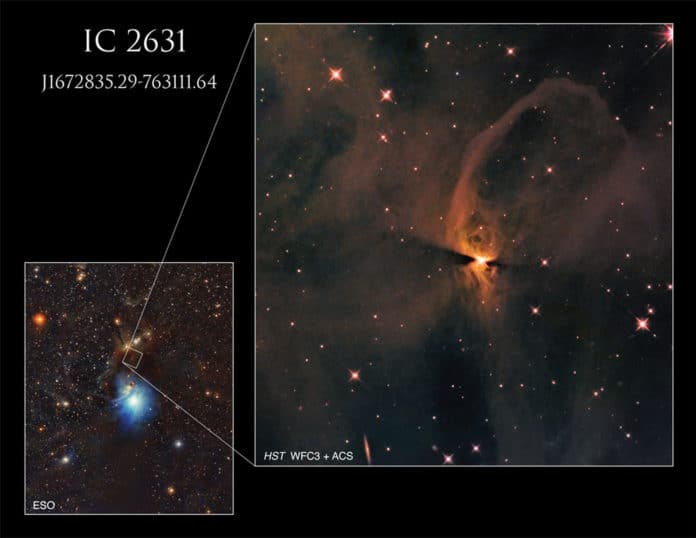Stars form from an accretion of gas and dust, which collapses due to gravity and starts star formation. This process takes around a million years from when the initial gas cloud begins to collapse until the star is created and shines like the Sun.
As the cloud collapses, a dense, hot core forms and begins gathering dust and gas, creating an object called a “protostar.”
NASA/ESA Hubble Space Telescope captured a protostar called J1672835.29-763111.64 in the reflection nebula IC 2631. IC 2631 is the brightest nebula in the far southern constellation of Chamaeleon.
The protostar gathers mass from its parent molecular cloud. It shines by taking heat energy emitted by its cloud and accumulating material from the nearby gas and dust. Once enough material collects, the core of a protostar becomes hot and dense enough that nuclear fusion occurs. After that process, the transformation into a star is complete. The leftover gas and dust can become planets, asteroids, comets or remain as dust.
The image of protostar J1672835.29-763111.64 is part of a Hubble survey targeting 312 protostars within molecular clouds previously identified with the Spitzer and Herschel infrared space observatories.
As they emit a lot of heat energy, protostars are visible primarily in infrared light. Hubble’s advanced infrared capabilities could better resolve the protostars and examine their structure, including the accumulating gas and dust and faint companion objects.
